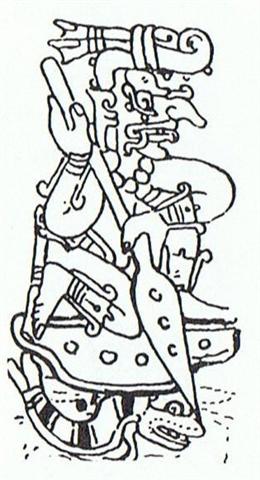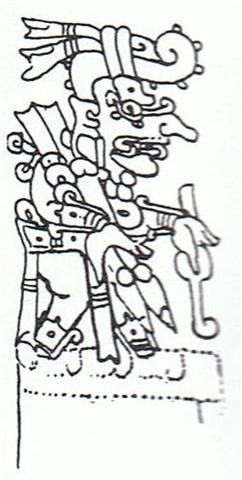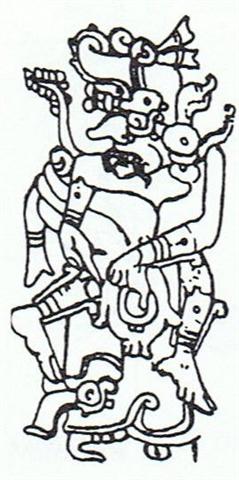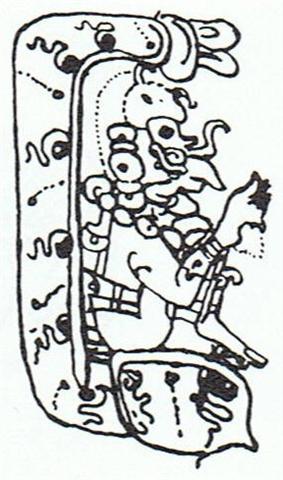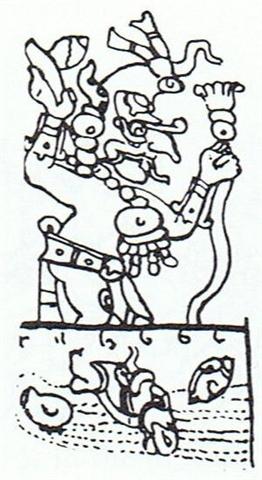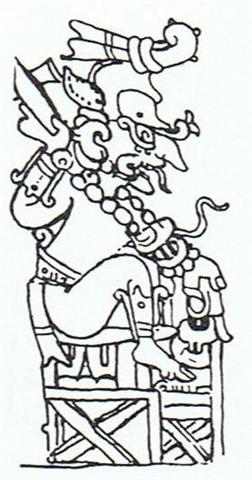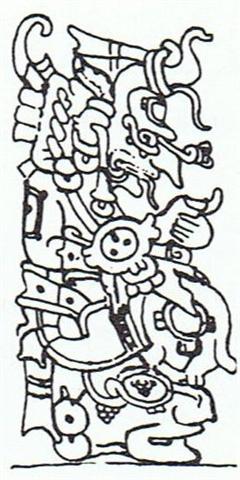6. One might suppose 6 periods would be enough for a description of the path of Sun, but clearly we must add 2 more:
The last of these 8 Rain God pictures has another 'monster head' at bottom and this one is looking forward. Probably it is a later stage of the head forming the floor of the cave. The eye of this monster contains the sign of rain clouds, a sign which we have encountered earlier in 4 * 20 = 80 days beyond midsummer:
At the temple of the monster another such rain cloud sign could be there in order to state '2' (we are in the 2nd part of the year). The preceding (7th) figure is upraised on some kind of platform consisting of 2 parts, and the figure wading in the ocean (number 6) should be counted together with the 7th figure because both have their right arms held high as if about to strike down. This kind of 'hewing' gesture would probably be called ta on Easter Island:
|
